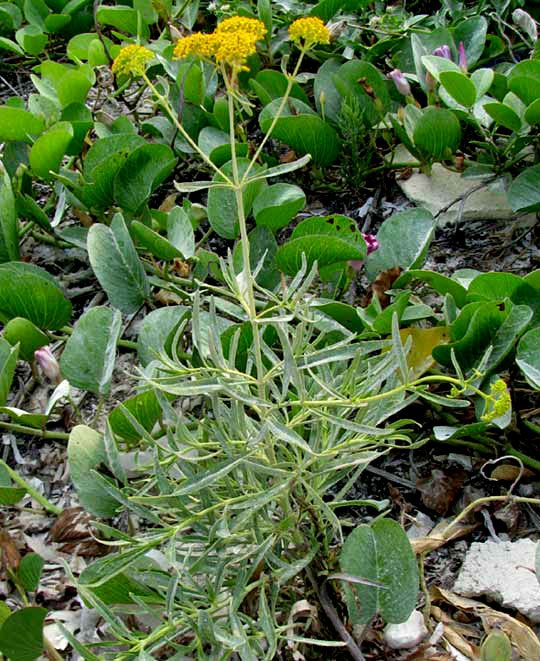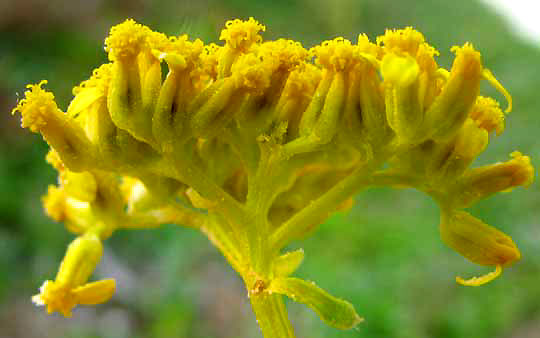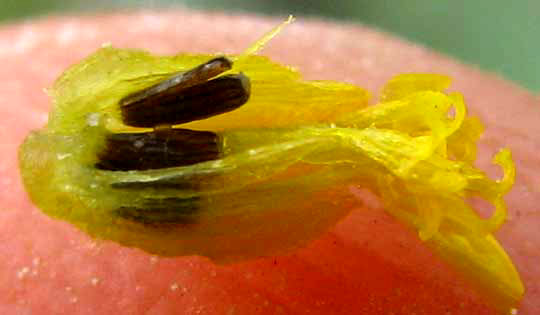Excerpts from Jim Conrad's
Naturalist Newsletter
from the May 8, 2011 Newsletter issued from Mayan Beach Garden Inn 20 kms north of Mahahual; Caribbean coastal beach and mangroves, ~N18.89°, ~W87.64°, Quintana Roo state, MÉXICO
YELLOWTOPS FLOWERING
Along our sandy roadsides a knee-high plant is conspicuously flowering now, looking a little like the North's goldenrods, but it's something else entirely. You can see the silvery leaves and yellow flowers of one below:

A close-up of a flower-head cluster is shown below:

That inflorescence really looks like a goldenrod's, but goldenrods, genus Solidago, simply don't occur in this part of the world. A close-up of some Yellowtop achene-fruits proves that our plant isn't a goldenrod, below:

You may remember that goldenrod achenes are topped by fuzzy, white parachutes that help the achenes travel on the wind. You can see that Yellowtop's achenes bear no parachutes -- have no "pappi," as a botanist would say.
Since this wildflower lives on Florida's beaches, hammocks and in pinelands, as well as in similar places here in the Yucatán, the Bahamas and Cuba, it's treated in the online Flora of North America. There it's given the name Narrowleaf Yellowtop. It's FLAVERIA LINEARIS, a member of the Composite or Sunflower Family. Species in the genus Flaveria frequently occupy alkaline, saline, or gypsum-rich soils, and often occur in disturbed, moist areas.
The genus name Flaveria is based on the Latin word "flavus," meaning yellow.